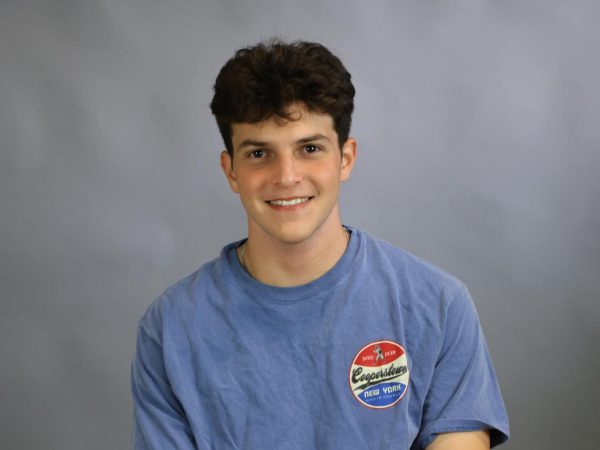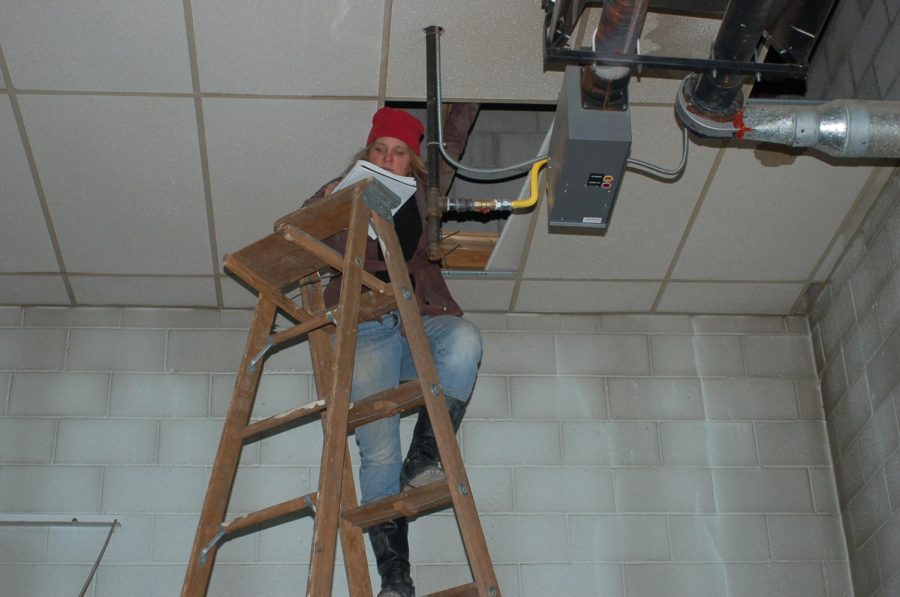Alix Henry
“I think the crazy architecture of the Ralph M. Captain elementary school and the open classrooms made me understand architecture earlier in my life than had I been in a normal building,” said Clayton High School alumna, Alix Henry. Henry currently works on sustainable and off-the-grid buildings made from tires, cans, and dirt in the New Mexican desert.
Henry graduated from Clayton High School in 1990 before attending Washington University in St. Louis as an Architecture major. After earning her degree and working in St. Louis for a year, Henry found that the area lacked interest in green architecture. After seeking out opportunities to work in sustainable development, Henry discovered a firm in New Mexico and secured a job. In 1995, along with her husband, Henry moved to New Mexico to design, build, and live in a unique method of biotecture: an Earthship.
An Earthship is a completely off-the-grid building, which means that they do not depend on outside resources for energy or other necessities. Henry’s firm has designed several methods of construction, so no fossil fuels are used for heating or cooling. “We use a combination of thermal mass, and in an Earthship’s case, that’s tires rammed with earth and then insulated. It acts as a battery so when the sun shines through the windows and hits, it heats up the walls. In the winters we don’t need any heating system to keep the building warm,” said Henry. Earthships are also off the grid in electrical supply. “In the case of my house and many other ships out here, it is 100% photovoltaic-solar panels.” Wind power can also be used and harnessed through small propellers, although they tend to break due to the several moving parts.
To maintain the sustainable and environmentally friendly goal of an Earthship, they are typically made of recycled or natural supplies. “We use a lot of cardboard and aluminum cans and bottles for some of the walls in the building. We also use a lot of natural materials. For example, the walls in my house are adobe plaster which is basically dirt from the site that we sift down to be very fine, then add sand, chopped straw, and water.” This combination of materials serves as the traditional plaster for the inside of the building. Additionally, tires packed with dirt are used as “bricks” for load-bearing walls and insulation.
Despite her strong educational background and vast work experience in architecture, Henry continues to find her male-dominated field challenging; she often needs to combat “mansplainers”. “Oftentimes I’m the only woman on the job site. The contractors are often all men, same with the engineers.” Despite frustrating conversations, Henry always ensures the job is done correctly and carried out in accordance with her design.
During her time at Clayton High School, Henry was involved in Student Government as well as other activities that allowed her to take leadership roles and fostered teamwork. She is thankful for her education from the district, “At CHS, I was really lucky that the math and science departments were pretty strong. Part of the reason I ended up in architecture is because I had skills in math and art.” Additionally, due to her strong English foundation, she was successful while studying at WashU, and after, when writing and communicating as an architect. “I think Clayton High School just really gave me a strong foundation for being able to do many things.”
When asked for advice to give to the current students of Clayton High School, Henry said to “take advantage of everything CHS has to offer. One of the nice things about the community of Clayton that I didn’t realize until recently is that it is a pretty diverse community. There are a lot of people from all over different parts of the world and a lot of differently educated people…in a lot of different careers within the community of Clayton. That makes for an interesting background.”
A $50 or more donation includes a subscription to the Clayton High School Globe 2024-2025 print news magazine.
We will mail a copy of our issues to the recipients of your choice.
Your donation helps preserve the tangible experience of print journalism, ensuring that student voices reach our community and that student democracy thrives.

Pronouns: he/him
Grade: 12
Years on staff: 4
What's an interesting fact about you? I love driving.
What's your favorite movie? A Few Good Men.
What do you like about...


